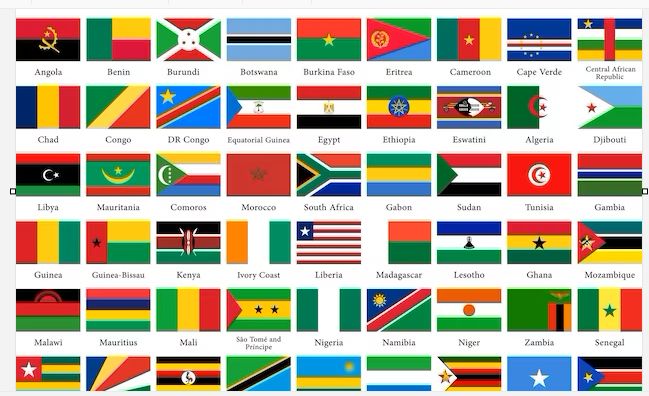Africa is home to some of the most dangerous roads in the world, with traffic accidents claiming thousands of lives annually. One of the significant contributors to this alarming situation is the proliferation of unsafe commercial passenger vehicles. These vehicles, often modified to carry more passengers than they were designed for, pose a serious threat to the safety of commuters. In this article, we will explore the risks associated with these vehicles, the reasons behind their prevalence, and the urgent need for African governments to take decisive action to address this issue.
The Risks of Modified Commercial Vehicles
Commercial vehicles, such as delivery vans and “gele geles,” are frequently converted into passenger vehicles without proper safety modifications. These vans are originally designed for transporting goods but are later modified to carry passengers. This conversion involves welding metal bench seats into the back, which are not only uncomfortable but also lack basic safety features like proper support and protection in the event of an accident1. The seats are often poorly secured, leading to severe injuries during sudden stops or crashes. Moreover, these vehicles typically lack side-impact protection, making accidents more severe for passengers1.
Another common practice is the removal of original seats in “gele geles” to install metal benches, allowing for more passengers. This overcrowding not only reduces comfort but also significantly increases the risk of accidents. In emergencies, the rigid metal seats become deadly weapons, causing severe injuries to passengers1. The lack of emergency exits and proper weight distribution further exacerbates the risks, leading to rollovers on bad roads or sharp turns1.
Overloading and Lack of Enforcement
Overloading is a widespread issue in Africa, particularly in rural areas where traffic volume is low. Vehicles are often overloaded with passengers and goods, violating safety regulations. In Ethiopia, for instance, a tragic accident involving a small truck overloaded with 71 passengers resulted in a devastating loss of life. The incident highlighted the weak enforcement of safety laws, allowing such dangerous practices to continue unchecked3.
In many African countries, the enforcement of traffic laws is inconsistent and often ineffective. This lack of enforcement allows unsafe vehicles to operate freely, putting countless lives at risk. Law enforcement agencies face challenges in maintaining road safety due to inadequate resources and infrastructure5.
Economic and Social Pressures
The prevalence of unsafe commercial vehicles is also driven by economic and social factors. In many African cities, there is a lack of formal, reliable, and affordable public transportation systems. This void is filled by informal operators who modify vehicles to maximize profits, often at the expense of safety1. The economic pressure to provide cheap transportation options leads to the proliferation of these dangerous vehicles.
The Role of Government and Law Enforcement
To address the issue of unsafe commercial vehicles, African governments must take a multi-faceted approach. Here are some key strategies:
1. Establish and Enforce Safety Standards
Governments should set clear safety standards for vehicle conversions, focusing on seat installation, emergency exits, and weight distribution. Existing vehicles should be given a grace period to comply, while new vehicles must adhere to these standards from the outset1.
2. Regular Vehicle Inspections
Mandatory safety inspections for commercial vehicles are crucial. These inspections should ensure that vehicles meet basic roadworthiness standards, including proper functioning of brakes, lights, and tires5.
3. Ban Unsafe Modifications
Strict regulations should be enforced to prevent unsafe modifications of vehicles. This could involve banning the use of metal benches and ensuring that all seats are properly secured and cushioned1.
4. Public Awareness Campaigns
Educating the public about the risks associated with unsafe vehicles can encourage commuters to make informed choices. Awareness campaigns can highlight the dangers of overloading and the importance of using properly maintained vehicles1.
5. Strengthen Law Enforcement
Effective law enforcement is critical in reducing traffic accidents. Visible police presence and consistent enforcement of traffic laws can deter reckless driving behaviors and ensure compliance with safety regulations5.
Examples of Effective Regulation
Some African countries are taking steps to improve road safety. In Kenya, for example, the National Transport Safety Authority (NTSA) has introduced regulations requiring commercial vehicles to have third-party insurance, valid inspection certificates, and speed limiters6. These measures aim to ensure that commercial vehicles meet safety standards and reduce the risk of accidents.
Conclusion
The proliferation of unsafe commercial passenger vehicles in Africa poses a significant threat to public safety. It is imperative that governments take immediate action to address this issue by establishing and enforcing safety standards, conducting regular inspections, banning unsafe modifications, and educating the public. Effective law enforcement is crucial in ensuring compliance with these regulations. By working together, African governments can reduce the number of traffic accidents and fatalities, creating safer roads for all users. The time for action is now; every day that passes without intervention puts more lives at risk.
References1 – The Point: How modified vans and “gele geles” are putting Gambians at risk2 – Business Insurance: How to Lower Trucking & Heavy Haulage Risks in South Africa3 – Modern Treatise: Inside Africa: On Ethiopia’s Roads, 71 Passengers Are Killed In Mysterious Accident4 – Tata Motors South Africa: What is a Commercial Vehicle?5 – Hyperlabs: The Importance of Law Enforcement in Road Safety in Africa6 – Capital News: NTSA issues mandatory rules for commercial vehicles7 – FIA Region I: Promoting Safer and Cleaner Used Vehicles for Africa
By Randall Hugh Hart
Citations:
- https://thepoint.gm/africa/gambia/opinion/dangerous-rides-how-modified-vans-and-gele-geles-are-putting-gambians-at-risk
- https://businessinsurance.co.za/news/lower-trucking-heavy-haulage-risks-south-africa/
- https://www.moderntreatise.com/africa/inside-africa-on-ethiopias-roads-71-passengers-are-killed-in-mysterious-accident
- https://www.tata.co.za/blog/what-is-a-commercial-vehicle
- https://www.hyperlabs.co.za/the-evolution-of-modern-architecture/
- https://www.capitalfm.co.ke/news/2025/01/ntsa-issues-mandatory-rules-for-commercial-vehicles/
- https://www.fiaregion1.com/wp-content/uploads/2020/06/FIA-Report_Final-V3_HR.pdf
- https://afrosafe-eu.africa/wp-content/uploads/2024/02/D4.1-Safe-vehicles.pdf
- https://www.nepad.org/blog/arrive-alive-saving-african-lives-using-road-safety-technologies
- https://www.thinkglobalhealth.org/article/revitalizing-road-safety-regulation-africa
- https://www.nature.com/articles/s41599-020-0502-8
- http://www.scielo.org.za/scielo.php?script=sci_arttext&pid=S0038-23612014000200005
- https://brigade-electronics.com/commercial-vehicle-safety-products/
- https://www.ssatp.org/sites/default/files/publications/SSATPWP101-Road-Safety-Framework.pdf
- https://archive.uneca.org/sites/default/files/PageAttachments/decade_of_action_for_road_safety_2011-2020_en.doc.pdf
- https://www.iol.co.za/motoring/industry-news/are-south-africas-affordable-cars-and-bakkies-unsafe-by-international-standards-2525378f-35be-4861-abe6-5424281f016f
- https://news.africa-business.com/post/exporting-automobiles-to-africa
- https://www.afdb.org/fileadmin/uploads/afdb/Documents/Publications/WPS_No_282_Africa%E2%80%99s_Automotive_Industry_Potential_and_Challenges.pdf
- https://en.wikipedia.org/wiki/List_of_accidents_and_incidents_involving_airliners_by_location
- https://truckandfreight.co.za/alarming-rate-of-truck-accidents-its-out-of-control-says-attorney/
- https://mannahr.co.za/blog/south-africa-s-transportation-and-logistics-industry-accident-statistics
- https://www.rtmc.co.za/images/rtmc/docs/research_dev_rep/Fatal-Truck-and-Bus-Crashes-in-SA—March-2023.pdf
- https://www.arso-oran.org/what-are-the-harmonized-african-standards-for-the-automotive-sector-all-about/
- https://www.afro.who.int/sites/default/files/2017-06/Road_Safety_AFRO_for_web_0.pdf
- https://new.kenyalaw.org/akn/ke/act/ln/2018/3/eng@2022-12-31/source
- https://www.voanews.com/a/rising-road-deaths-in-africa-are-due-to-poor-compliance-with-safety-laws-who-reports-/7711317.html
- https://www.nortonrosefulbright.com/en/news/e624c16d/economic-regulation-of-transport-act-6-of-2024-a-new-era-for-south-africas-transport-sector
- https://www.vitronic.com/en-us/road-safety-in-africa
- https://www.jtlu.org/index.php/jtlu/article/view/2202/1662
- https://www.autoshippers.co.uk/south_africa_car_shipping_guide.htm
- https://sabinet.co.za/explore-the-roadways-by-finding-reliable-information-about-transport-permits



